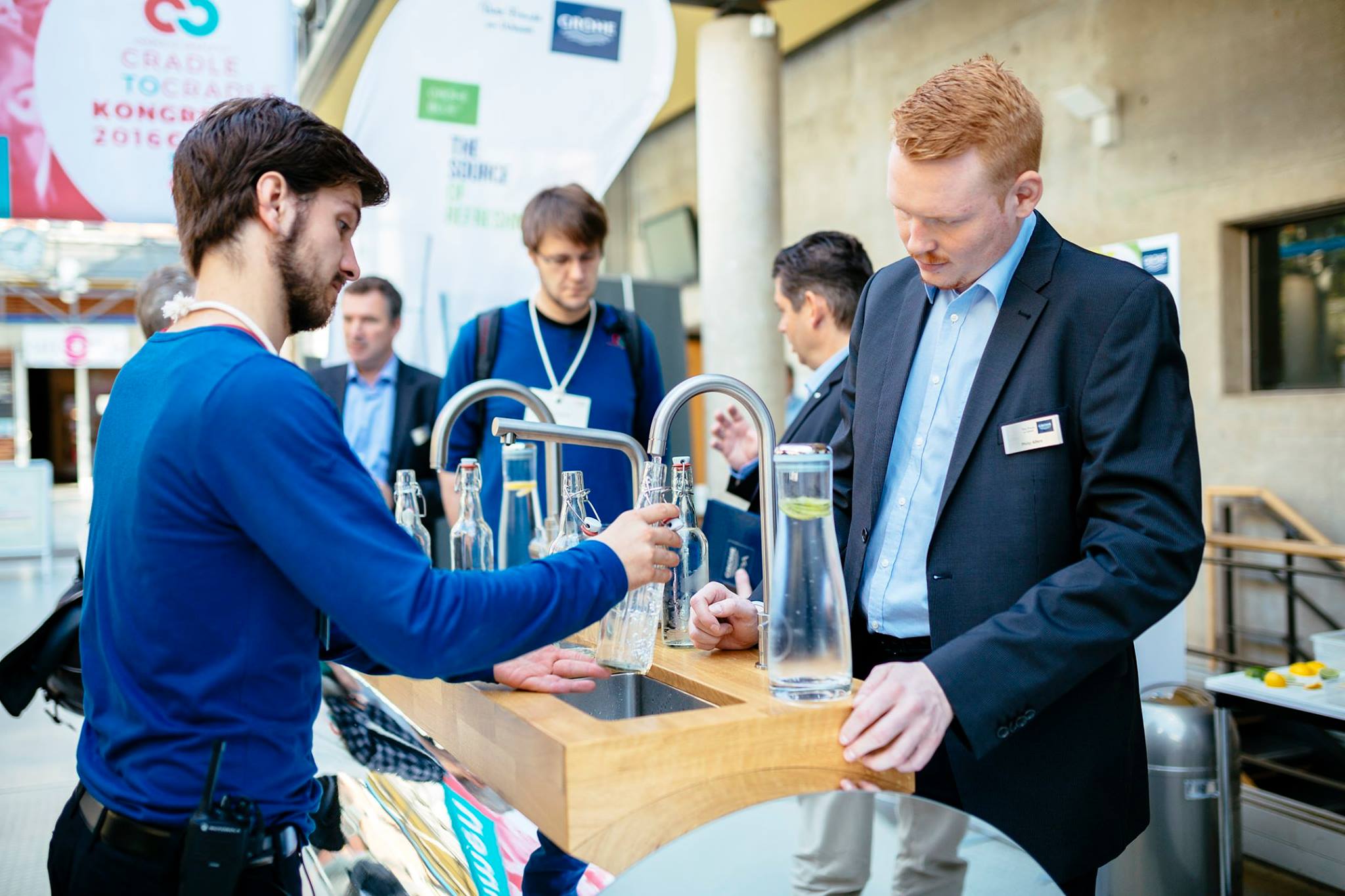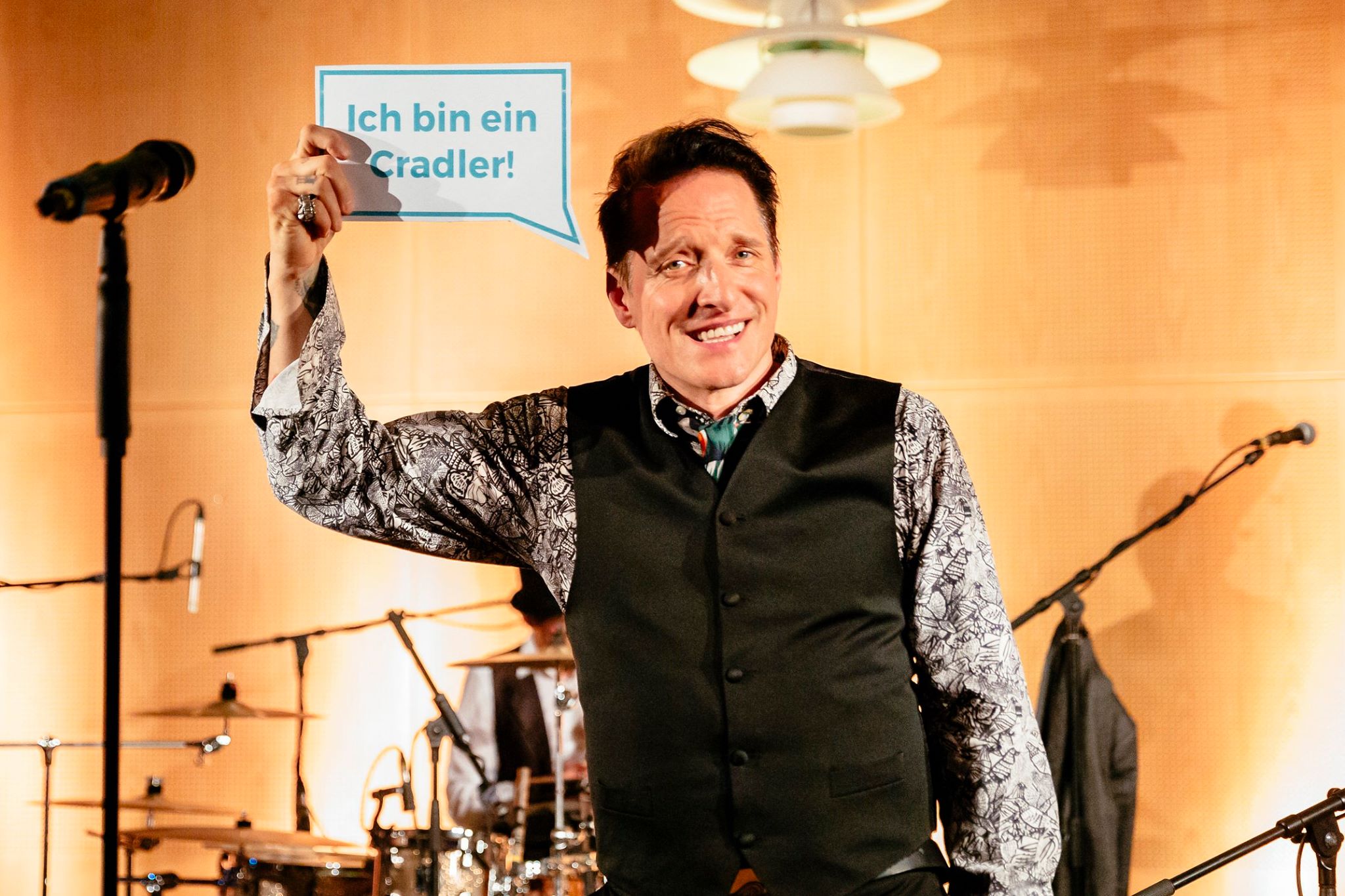Grüne Werkstatt Wendland
27. Juli 2016Santai
2. November 2016Facts
3. Cradle to Cradle Conference 23./24.09.2016
Location: Leuphana University Lüneburg, Germany
Area: Kreislaufwirtschaft
Website: www.c2c-kongress.de
Facebook: www.facebook.com/C2C.eV , #c2ck16
3. Cradle to Cradle Conference in Lüneburg
At the end of October I went to the Cradle to Cradle (C2C) Kongress nach Lüneburg. Nach einiger Zeit Cradle to Cradle Veranstaltungsabstinenz war ich besonders gespannt darauf, wie sich die Szene weiter entwickelt hatte.
in Lüneburg with ökoRAUSCH Think Tank’s Marc and our intern Anne. Since I hadn’t been to a C2C conference for a long time, I was excited to see how the scene had developed.
For the third time already, 100 volunteers from the 36 regional groups from the C2C association helped put together the conference at the University of Lüneburg. Which is why the atmosphere at the beginning of the conference was more like that of a class reunion. So I was happy to see that the raffle was won by a cradle to cradle member, who took home a Herman Miller office chair.
The audience was very diverse: Among the 700 participants were founders of start-ups with concrete ideas and questions as well as employees from large corporations that wanted to get input that they could use to convince their CEOs to get on board. People who had never heard anything about cradle to cradle met up with utopians, sceptics and young people committed to the cause alike. They gave out gift bags at the beginning with glass bottles that you could fill up at water stations, either with carbonated or non-carbonated water as well as tap water from the water fountains made by the University of Lüneburg.
The conference even had some prominent guests. Prof. Dr. Michael Braungart took over the inauguration of the event and presented the principle his brand of circular economy with some absurd yet catchy examples: “Protect the environment, produce less waste, protect the environment, use less energy. That isn’t protection. That’s like saying: Protect your child (or your wife), hit it five times instead of ten. […] Carbon neutrality is complete nonsense. Have you every seen a carbon neutral tree? We’re dumber than trees with all of our smarts. A tree is always good for the environment, never ‘less harmful’.”
Journalist and energy expert Dr. Franz Alt led us through the programme with witty anecdotes and T.V. chef Sarah Wiener was as much of a major attraction as the great final concert put on by Bela B & Danube’s Banks, who called on the participants to support the C2C association.
Nevertheless, the content of the conference was always in the foreground. It offered a broad spectrum of topics and tried to include every relevant field. There were keynote speeches by Prof. Dr. Martin Stuchtey on circular economy and Wolfgang Grupp on TRIGEMA – one of them a scientific speech and one from the perspective of a self-professed »ordinary worker«. Following the speeches there were panels on textiles, plastic, energy and politics as well as expert discussions on building construction, product development, design and education.
Efficiency vs. effectiveness
An example that is used a lot to introduce the idea of cradle to cradle is the washing machine: One of the main differences between cradle to cradle and other sustainability concepts is that they are interested in the longevity of products and the difference between efficiency (less bad) and effectiveness (positive foot print): Is it truly effective (apart from being efficient) to build a washing machine that lasts 20 years when experience has shown that technical advancements are to be expected to come along about every 8 years that could considerably increase the energy efficiency? Why should you keep using a washing machine for 12 years when you could be using a newer model that uses a lot less energy?Warum also die letzten 12 Jahre mit einem Gerät verbringen, das mehr Energie verbraucht, als ein neues?
One of the approaches and central ideas of cradle to cradle is using instead of owning. In the end, we aren’t really interested in the plastic cover, the stainless steel drum, rubber gaskets and hoses. We are interested in washing our clothes. It’s just that within the current consumption patters we are used to owning things.
But what if the manufacturer didn’t sell washing machines, but rather “2,000 loads of laundry”. Ownership over the machine would still be held by the manufacturer – making it a leasing programme. As soon as a better machine is available, the manufacturer would exchange the machine and take back the plastic, steel and rubber and use the material as a valuable source of raw material for the next generation of washing machines, fulfilling a further cradle to cradle principle: Waste equals food. Not only that: the manufacturer himself knows best what needed improvement in the older generation of washing machines and exactly how to use the material in both basic cycles: the biosphere for material that can re-enter it safely, and the technosphere for the rest.
The great advantage: There isn’t any cross-contamination by third-party products. This is how material can be re-used in its original purity and quality in the new cycle. Furthermore, if the manufacturer knows from the beginning that he is going to get the products back, how great is the incentive then to use substances that are difficult to get rid of, meaning they do not fit into one of the two spheres?
Cradle to Cradle in Product Development
The expert discussion on product development was led by Mike Blicker and Tom Ohlendorf, research assistants at the Environmental Protection Encouragement Agency (EPEA) »The cradle of cradle to cradle«. The EPEA is the institutionalised research and certification institute for cradle to cradle. Product designers can consult EPEA chemists as well as material and process specialists to find out if their product is viable for the cradle to cradle certification based on the materials used in their products, the appropriateness of the product cycle and certain specified scenarios.
According to the EPEA, their data base contains analyses of approximately 9,500 products and over 200,000 different materials. I asked whether or not parts of the data base would be made accessible to the public in the future, the answer to which was no. First of all, they have signed non-disclosure agreements with their clients, which is a completely understandable argument. Second of all, the user scenarios are too complex. For example, in one scenario, a material can be completely okay to use but in another it can be rather harmful. The latter is not easy to understand for me personally. Of course there are surely materials that apply to this case. But of these 200,000 different materials, aren’t there a few, say 10%, that could be made accessible with reference to their positive use scenarios?
During my research I found a list of all of the products and material that have been certified so far on www.c2ccertified.org. Is this the first step towards a more encompassing data base?
A young, active fashion designer from Berlin thinks the same thing. It’s not easy for young start-ups, who are the current leaders of innovation, to make their way to a cradle to cradle production concept. A start-up cannot even afford the quick scan that EPEA offers, which is the preliminary step for each certification process. Depending on how complex a product is, it could cost anywhere between 1,000 and 5,000 Euros. A young employee of a tool manufacturer had questions regarding how people can start the cradle to cradle process. He said it would be hard for him to decide which of the many components he should begin with, say for example those of a rechargeable driller. Both of the experts suggested starting with the outer casing material because it comes into direct skin contact with the user. Electronic parts are generally difficult and they said it would be complicated to include them in an appropriate circular economy any time in the near future. A young woman who had recently been to a symposium on mobile telephones suggested the following: »“For the time being, just use things as long as you possibly can. It will be a long time before the technological possibilities are advanced enough.«
Cradle to Cradle in der Politik
Personally, I found it most interesting to find out that cradle to cradle has made it into the political sphere and that people like Hiltrud Lotze, a member of the German Bundestag’s environmental committee, and Rinhold Rünker, a group leader at the Ministry for Economics of the German federal state of North Rhine-Westphalia, are leading heated discussions about correct implementation and funding opportunities for the programme. According to Lotze, politicians can only make informed, innovative decisions if they have informed themselves about possible alternatives to the current strategies – and encouraged other politicians to do so. Members of the free economy are often critical of political actors. Norbert Rethmann of the Rethmann Group, also on one of the panels, communicated this quite clearly: »They can feel free to pass new laws but we in the economy are already three years ahead of them.«
Conclusion
I found that there was a leitmotif throughout all the contributions, which was a clear call to action, calling upon manufacturers to be more responsible, along with the optimism of the idea – and of our times.
In his contribution, Wolfgang Grupp demanded that »…companies take responsibility for their decisions and put their private assets at risk« and to establish more »decency« in company management. Here, he was in agreement with Norbert Rethmann: »Manufacturers must take more responsibility for their products! If policies forced car makers to take back the cars when they were no longer needed, then the designers and engineers would completely change the way they thought! And burning garbage is just too cheap! The free market would find new recycling solutions in a heart beat if burning garbage cost 120€ instead of 60€ per ton!«
Dr. Franz Alt found his own words: »We already know a lot, but we do relatively little.«
Prof. Dr. Martin Stuchtey had optimistic things to say about the impending paradigm shift: »Today we shake our heads at what was normal yesterday.« and thinks that we are on the right path: »We always think that, in order to bring a huge change, we have to convince 100% of the population. But that’s not true. In fact you only need 10%, and in some sectors we already have 9%.«
And as is so often the case, the conference ended where it started, in this case with Prof. Dr. Henrik von Wehrden, the dean for sustainability at the University of Lüneburg: »The path to sustainability is like zen: We will never reach our goal, but if we constantly reflect on it, we can get closer and closer to it.«


















